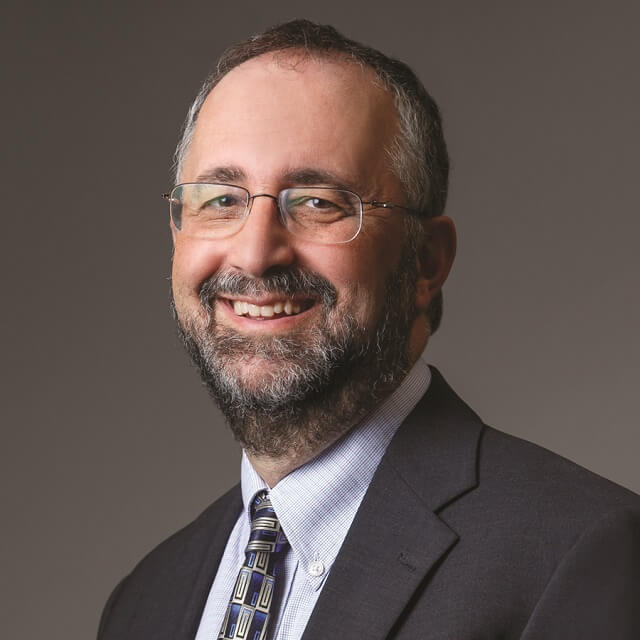Award Lectures
Proctor Award Lecture
Saturday, May 1, 12:30-1:30pm EDT
Recipient: Peter Campochiaro, MD, FARVO
Retinal/Choroidal Vascular Diseases: Past, Present, and Future

Retinal/Choroidal Vascular Diseases, including Neovascular Age-Related Macular Degeneration, Diabetic Retinopathy, and Retinal Vein Occlusion, are highly prevalent world-wide causes of visual disability. Laboratory studies have helped to demonstrate the important roles of VEGF, HIF-1, and TIE-2 in the molecular pathogenesis of these diseases. Clinical studies have confirmed the importance of VEGF and TIE2, and have led to approval of antiVEGF proteins given by repeated intraocular injections which have revolutionized treatment. In the future, sustained delivery of antiVEGF agents and sustained expression of antiVEGF proteins by gene transfer will largely replace repeated intraocular injections and will be combined with sustained activation of Tie2 in patients with suboptimal outcomes from sustained suppression of VEGF.
Friedenwald Award Lecture
Sunday, May 2, 2:30-3:30pm EDT
Recipient: Lloyd Paul Aiello, MD, PhD, FARVO
Changing The Global Paradigm for Evaluation, Management and Treatment of Diabetic Eye Disease
Over the last few decades, the advances in our understanding, evaluation and treatment of diabetic eye disease have been remarkable. The advent of intensive systemic diabetes control, laser photocoagulation and vascular endothelial growth factor (VEGF) inhibitors have revolutionized both the approach to and the effectiveness of our care for diabetic retinopathy. The blindness rate from diabetes is now less than 4% and nondestructive approaches to proliferative diabetic retinopathy, diabetic macular edema, and retinopathy severity itself are available.
disease have been remarkable. The advent of intensive systemic diabetes control, laser photocoagulation and vascular endothelial growth factor (VEGF) inhibitors have revolutionized both the approach to and the effectiveness of our care for diabetic retinopathy. The blindness rate from diabetes is now less than 4% and nondestructive approaches to proliferative diabetic retinopathy, diabetic macular edema, and retinopathy severity itself are available.
Concurrently, technological innovations have produced extraordinary advances in retinal imaging and evaluation. Techniques such as ultrawide field (UWF) pseudocolor imaging, UWF fluorescein angiography, optical coherence tomography (OCT), OCT angiography, automated lesion detection, and artificial intelligence (AI) approaches permit more rapid evaluation, greater retinal visualization, earlier disease detection, novel risk factor identification and associations with systemic disease that were not previously possible.
The combination of these therapeutic and diagnostic advances has implications so profound that efforts are now underway to revise the established grading approaches for diabetic retinopathy and provide a more comprehensive staging system for this disease. In this lecture, we will review the recent evolution of diabetes eye care with an emphasis on new approaches, technologies, findings and future possibilities that are helping advance the current and future global paradigm for diabetes eye care.
Weisenfeld Award Lecture
Monday, May 3, 3:15-4:15pm EDT
Recipient: Paul S. Bernstein, MD, PhD, FARVO
Nourishing Better Vision

A unifying theme of my clinical and basic science research career has been an interest in the specialized nutrients that play fundamental roles in the physiology of the normal retina and in protection against macular disease. In this lecture, I will review my laboratory’s work on the retinoids, carotenoids, and very-long-chain polyunsaturated acids that are fundamental for the maintenance of a healthy human retina and provide perspectives on future interventions against macular dystrophies and degeneration.
Cogan Award Lecture
Wednesday, May 5, 11:30am-12:30pm EDT
Recipient: Maxence Nachury, PhD
Quality control of the ciliary proteome by the BBSome

How photoreceptors maintain the composition of their outer segments despite rapid turnover and extreme rates of trafficking remains a major unsolved question. Because the outer segment of photoreceptors is a hyper-specialized primary cilium, advancing our understanding of cilia has illuminated photoreceptor biology (and vice-versa). In the past decade, we learned that maintenance and regulation of the ciliary proteome are made possible by a diffusion barrier at the transition zone (the equivalent of the connecting cilium of photoreceptors) that only lets proteins pass though when ferried by molecular machines such as the BBSome. The major knowledge gaps are: 1- how the BBSome selects specific cargoes for removal from cilia while leaving other proteins behind and 2- how the BBSome enables its cargoes to breach the transition zone. This lecture will present our efforts at the structural, biochemical and cell biological levels to answer these questions.
